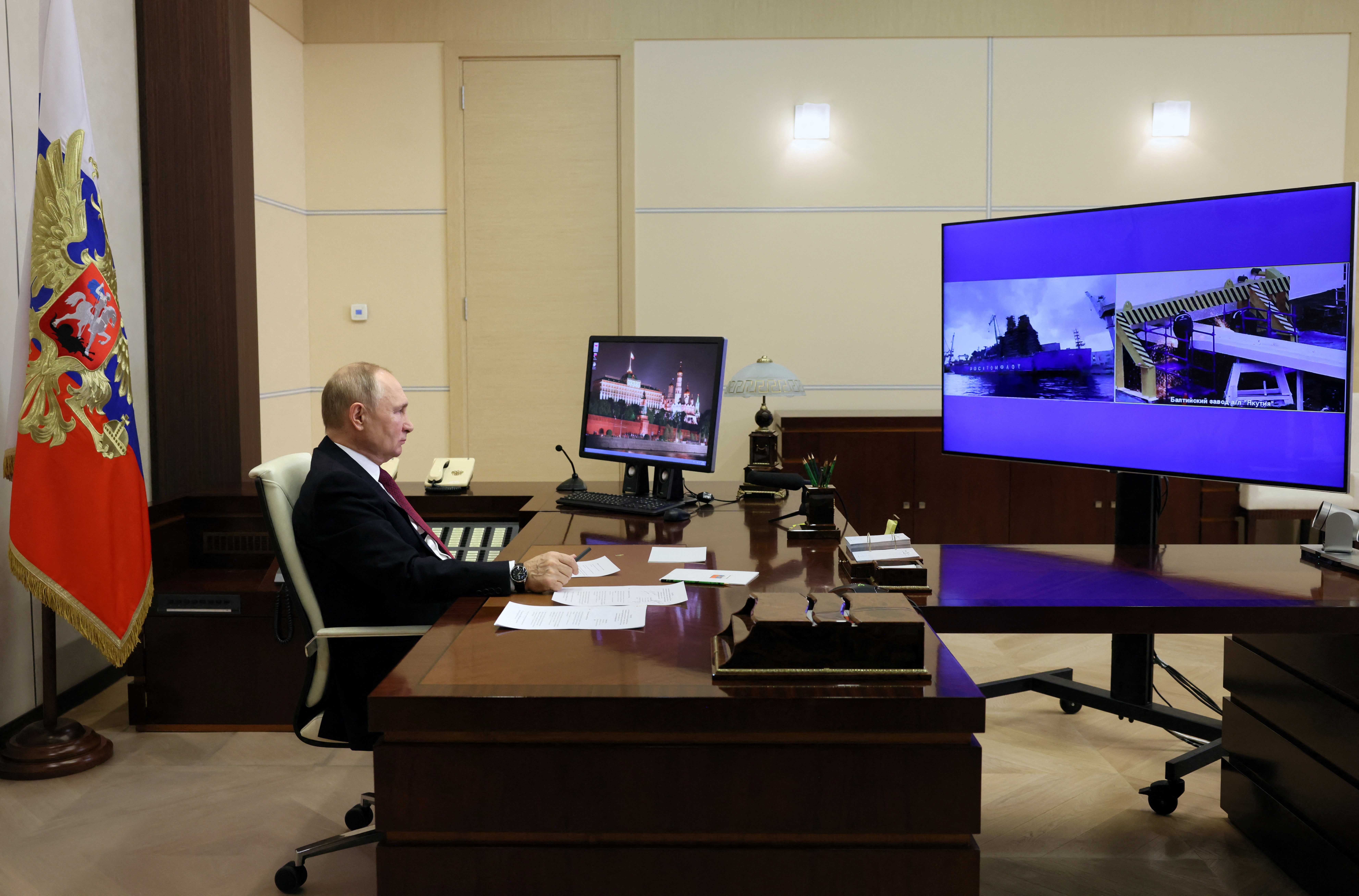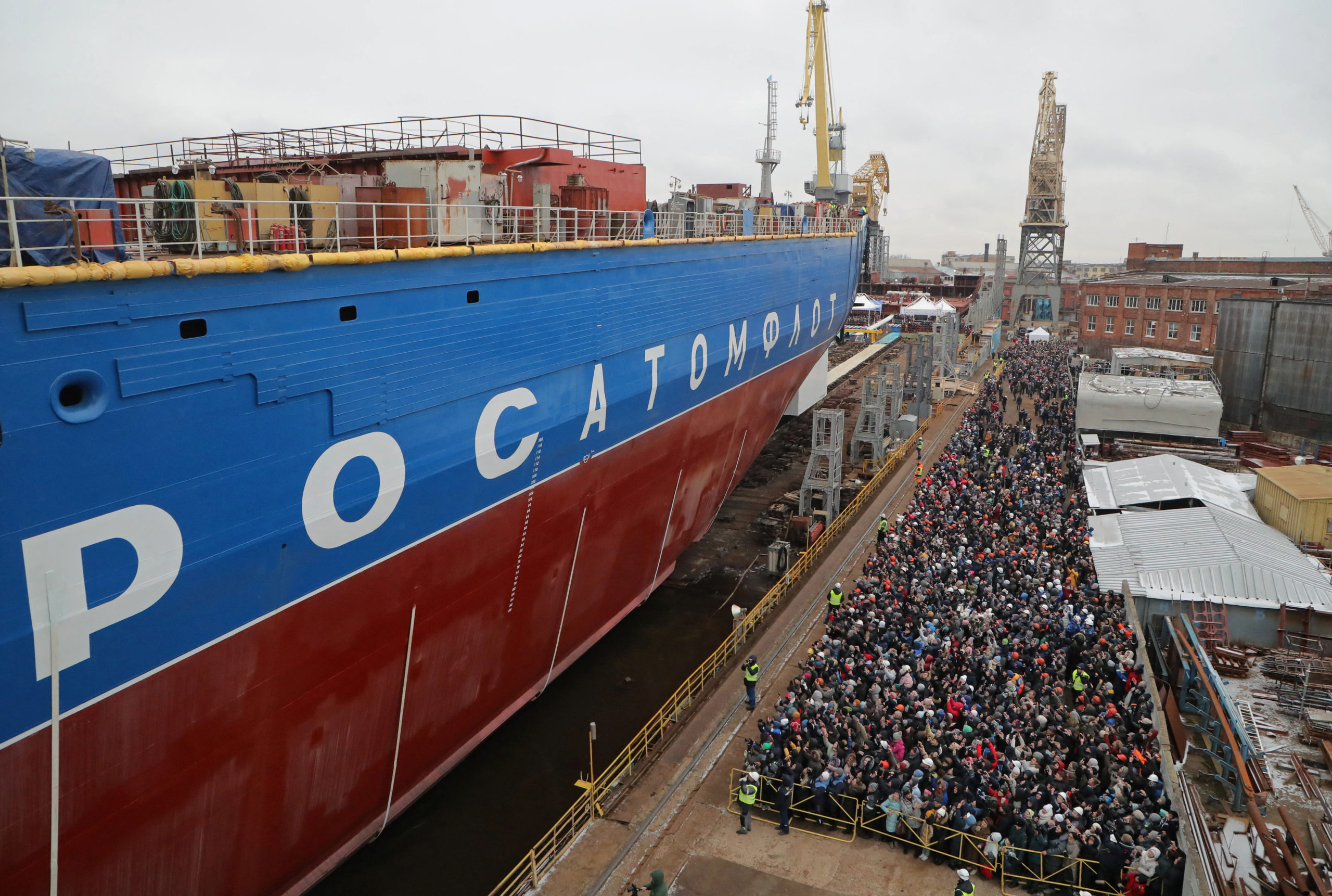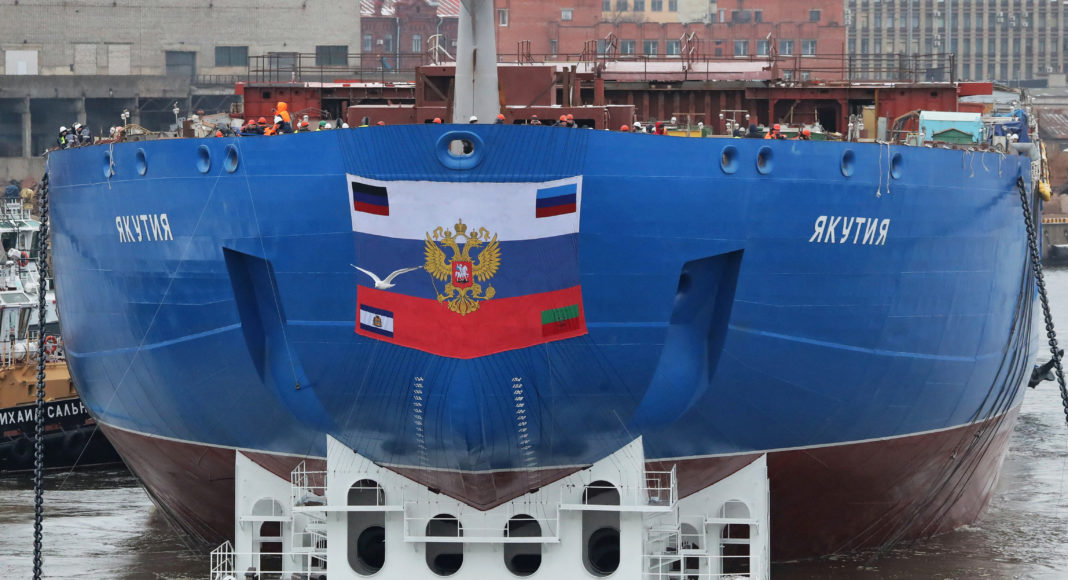Securing the Russian Arctic
 |
| Russian President Vladimir Putin takes part in the ceremony to raise the Russian national flag on the Ural nuclear-powered icebreaker and the launch of the Russia's newest and largest nuclear icebreaker Yakutia, via video link from the Novo-Ogaryovo state residence outside Moscow, Russia on November 22, 2022. (Aleksey Babushkin / Sputnik / Kremlin via Reuters) |
"Both icebreakers were laid down as part of a large serial project and are part of our large-scale, systematic work to re-equip and replenish the domestic icebreaker fleet, to strengthen Russia's status as a great Arctic power.""They are needed for the study and development of the Arctic to ensure safe, sustainable navigation in this region, to increase traffic along the Northern Sea Route.""The development of this most important transport corridor will allow Russia to more fully unlock its export potential and establish efficient logistics routes, including to Southeast Asia."Russian President Vladimir Putin
 |
| People watch the launch ceremony of the nuclear-powered icebreaker "Yakutia" at the Baltic Shipyard in Saint Petersburg, Russia on November 22, 2022. (Igor Russak / Reuters) |
Russia, since 2005, has increased its presence in the Arctic with its over 24,000 km of coastline, from the Barents Sea to the Sea of Okotsk. Tens of Arctic Soviet-era military bases have been re-opened, updated, re-equipped and manned. Russia has modernized its navy, developed hypersonic missiles, expending time and treasury and gaining expertise that experts in the Arctic feel would take ten years for the West to catch up with.
Through video link from the Kremlin Vladimir Putin took part in the ceremonial flag raising event and dock launch of two nuclear-powered icebreakers meant to ensure year-round navigation in the Western Arctic. From the Kremlin to St. Petersbirg, Mr. Putin described the icebreakers as being of immense strategic importance for Russia.
This is a time of tense relations with the other Arctic nations; the U.S., Canada, Norway, Denmark, Finland, Iceland and Sweden, where the Russian Federation's actions, and presumed plans for the future are viewed with suspicion. Sparked by a 2007 event when Russia planted a titanium flag and placed a time capsule under the Polar ice. As clear a signal as any of its intentions. Spurred in no small part by the mineral deposits and gas potential to be dredged from the ocean floor.
The shrinking ice cap is promising the opening of new sea lanes. The vast oil and gas resources known to lie in Russia's Arctic regions are ripe for exploitation. The Yamal Peninsula holds a liquefied natural gas plant.
The Yakutia nuclear icebreaker was launched in the docks as the Russian National anthem played with the raising of the Russian flag on the Ural icebreaker to begin deployment in December. The Yakutia has a displacement of 33,540 tonnes and is able to smash ice of up to three metres; to enter service by 2024.
According to Mr. Putin, a super-powerful nuclear 209-metre icebreaker, the Rossiya, with a displacement of up to 71,380 tonnes is to be completed by 2027, able to break through four metres-thick ice.
 |
| The Russian flag with flags of the Russian-controlled territories of four Ukraine's regions of Donetsk, Luhansk, Kherson and Zaporizhzhia is attached to the nuclear-powered icebreaker "Yakutia" during the launch ceremony at the Baltic Shipyard in Saint Petersburg, Russia on November 22, 2022. (Igor Russak / Reuters) |
Labels: Nuclear Icebreakers, Russia, Russian Arctic, Vladimir Putin

<< Home